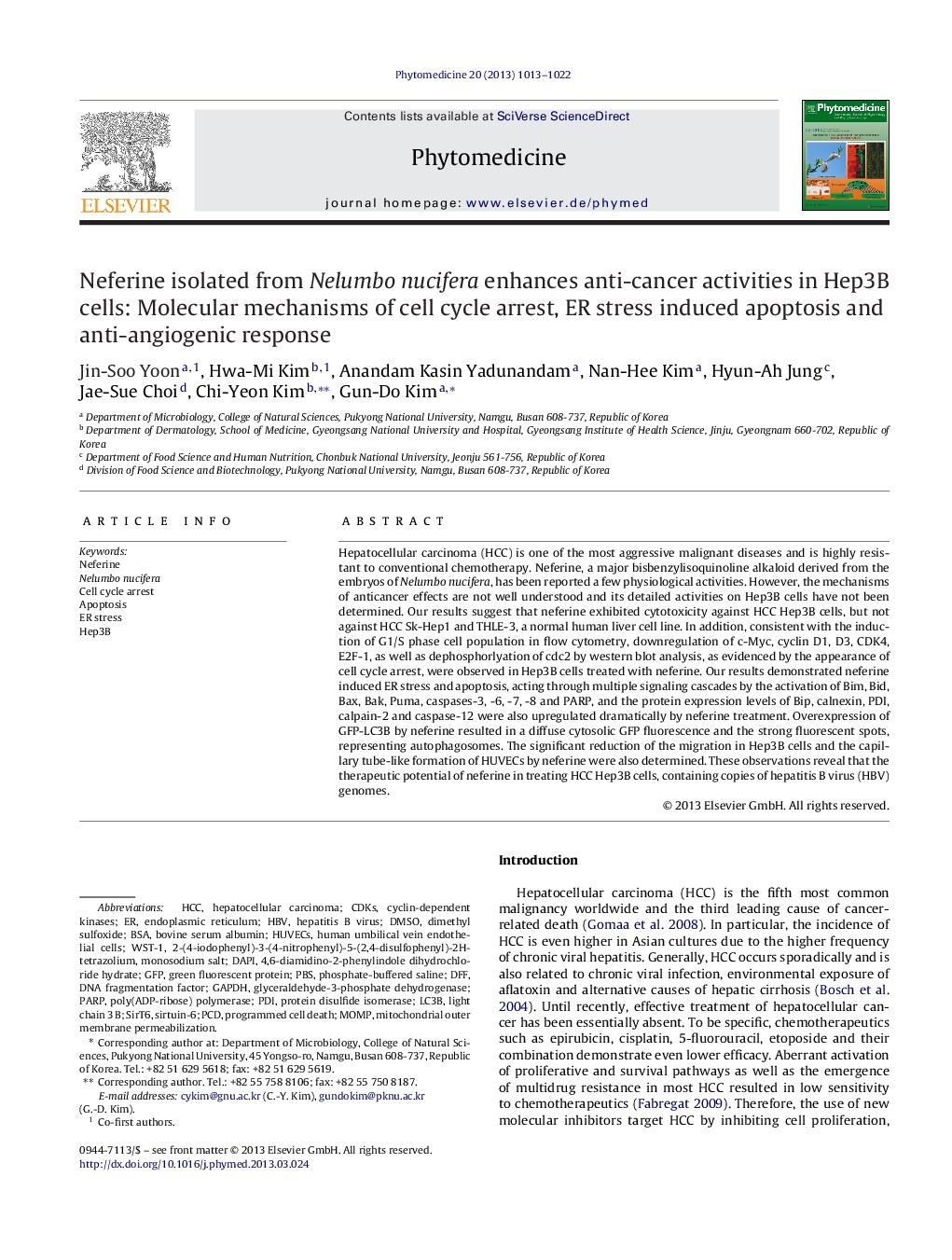| Article ID | Journal | Published Year | Pages | File Type |
|---|---|---|---|---|
| 2496661 | Phytomedicine | 2013 | 10 Pages |
Hepatocellular carcinoma (HCC) is one of the most aggressive malignant diseases and is highly resistant to conventional chemotherapy. Neferine, a major bisbenzylisoquinoline alkaloid derived from the embryos of Nelumbo nucifera, has been reported a few physiological activities. However, the mechanisms of anticancer effects are not well understood and its detailed activities on Hep3B cells have not been determined. Our results suggest that neferine exhibited cytotoxicity against HCC Hep3B cells, but not against HCC Sk-Hep1 and THLE-3, a normal human liver cell line. In addition, consistent with the induction of G1/S phase cell population in flow cytometry, downregulation of c-Myc, cyclin D1, D3, CDK4, E2F-1, as well as dephosphorlyation of cdc2 by western blot analysis, as evidenced by the appearance of cell cycle arrest, were observed in Hep3B cells treated with neferine. Our results demonstrated neferine induced ER stress and apoptosis, acting through multiple signaling cascades by the activation of Bim, Bid, Bax, Bak, Puma, caspases-3, -6, -7, -8 and PARP, and the protein expression levels of Bip, calnexin, PDI, calpain-2 and caspase-12 were also upregulated dramatically by neferine treatment. Overexpression of GFP-LC3B by neferine resulted in a diffuse cytosolic GFP fluorescence and the strong fluorescent spots, representing autophagosomes. The significant reduction of the migration in Hep3B cells and the capillary tube-like formation of HUVECs by neferine were also determined. These observations reveal that the therapeutic potential of neferine in treating HCC Hep3B cells, containing copies of hepatitis B virus (HBV) genomes.
